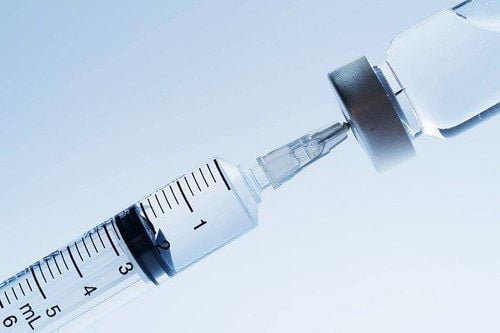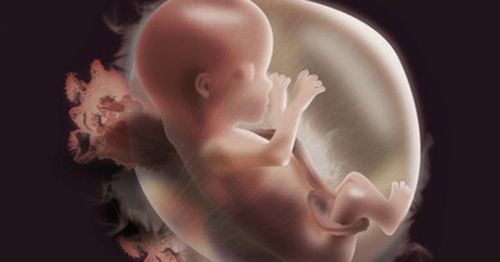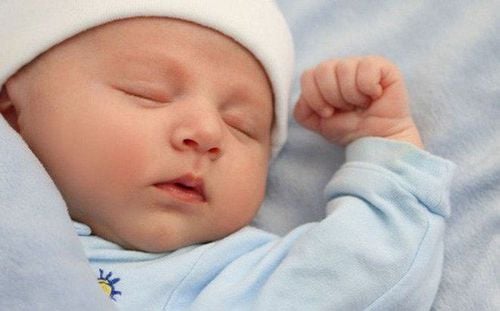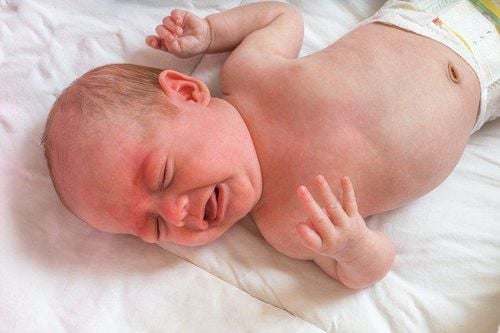This is an automatically translated article.
The article is professionally consulted by Master, Doctor Nguyen Thi An - Pediatrician - Neonatologist - Department of Pediatrics - Neonatology - Vinmec Ha Long International General Hospital. The doctor is a person who is very passionate about health care for children and has experience in successfully treating many cases of septicemia in infants.Sepsis can affect anyone and at any age, but it tends to be more common in the elderly and young children. Children, especially infants and young children, can be susceptible to sepsis that causes tissue damage, organ failure, and injury.
1. Causes of neonatal sepsis
Most sepsis that occurs in newborns is caused by bacteria, in some cases by fungi, viruses, or parasites. Babies can be infected before birth if the mother's amniotic fluid becomes infected, or during labor, the newborn can get the infection while passing through the infected mother's vagina. After birth, a baby can get an infection in the hospital from other conditions that require treatment, or at home.2. Which children are susceptible to sepsis?

Trẻ có thể bị nhiễm trùng trong quá trình sinh nở, vỡ ối
Premature babies (before 37 weeks). The amniotic sac ruptured earlier than 18 hours before birth. The mother has a strep infection or symptoms of contaminated amniotic fluid, such as a fever. Newborns are undergoing techniques to treat pathology such as catheterization or central venous catheterization.
3. Symptoms of sepsis in infants
Sepsis in infants can be difficult to detect, and symptoms depend on the cause, severity, and site of entry of the infection. Newborns may have the following symptoms:Signs of instability in the baby during labor or birth, such as fetal tachycardia, meconium-stained amniotic fluid Temperature disturbances (usually fever) breathing, such as a very rapid breathing rate Digestive problems such as poor feeding or an enlarged liver Nervous system problems, such as lethargy or difficulty staying awake, irritability
4. Diagnosis of sepsis in infants
Because the symptoms of sepsis are similar to many other conditions, the doctor will need to perform a number of other tests in addition to a physical exam to differentiate sepsis in newborns from other conditions. other medical conditions, including:Blood cultures to check for bacteria in the blood, but this test takes a few days to get the results, so if there are suspicious symptoms, the doctor will treat them immediately immediately and without waiting for results. But this is still a test to confirm for sure whether the newborn has sepsis or not. Urine culture to detect urinary tract infection. Inoculation in other sites such as open wounds. Blood tests to check for signs of infection and possible effects of sepsis on the kidneys, liver, and blood cells. A lumbar puncture to test the cerebrospinal fluid helps the doctor determine if a child has an infection of the brain and spinal cord. X-ray or other imaging techniques. For example, a chest X-ray to check for a lung infection.
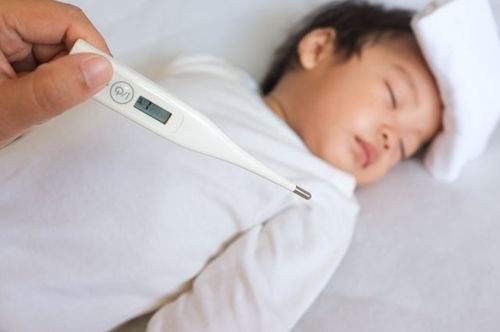
Một trong những biểu hiện của trẻ bị nhiễm khuẩn huyết là rối loạn thân nhiệt
5. Treatment of neonatal sepsis
Treatment will depend on the child's symptoms, age, general health, and severity of the sepsis.Early diagnosis and treatment is the best way to prevent dangerous complications of sepsis. If the doctor suspects that the baby has sepsis, the newborn will be given antibiotics right away, even before the test results are available. Once the test results are available, the doctor will adjust the treatment plan to suit the cause of the sepsis and the organs that have been affected.
Newborns with sepsis are very dangerous, so they are often referred to a newborn intensive care unit. Here, the newborn will be monitored very closely. In addition to antibiotics, the child will receive fluids, other supportive medications, noninvasive oxygen, nutrition, and mechanical ventilation if necessary.
6. Is it okay for a newborn to have a blood infection?
Sepsis is a life-threatening illness in newborns that affects many organs in the body at once. Sepsis is a major cause of death in premature infants during the first week of life. Low birth weight infants have a higher risk of death than infants who also have sepsis but are not underweight. Extremely low birth weight infants with Candida or bacterial sepsis have a much higher risk of death.Newborns can recover from sepsis without long-term complications. However, in the case of an infant with meningitis, the child may later have growth retardation, cerebral palsy, seizures, or hearing loss.
Pediatrics - neonatology department at Vinmec International General Hospital is the address for receiving and examining diseases that infants and young children are susceptible to. With modern equipment, sterile space, minimizing the impact as well as the risk of disease spread. Along with that is the dedication from experienced doctors who specialize in pediatric patients, helping the examination and treatment achieve high results.
Please dial HOTLINE for more information or register for an appointment HERE. Download MyVinmec app to make appointments faster and to manage your bookings easily.
References: clevelandclinic.org; stanfordchildrens.org
MORE:
Common Late Neonatal Infections Risk Factors for Neonatal Infections Neonatal sepsis: What to know: What you need to know





